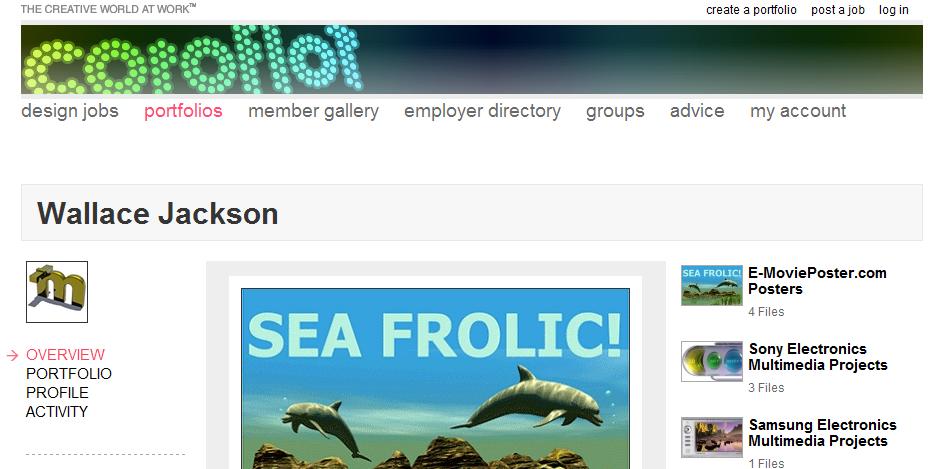Crowdsourcing is part of our online democracy, i.e., the people are asked, and the people answer.
I happen to like the way Wikipedia defines the term:
Crowdsourcing is the act of outsourcing tasks, traditionally performed by an employee, to a large group of people, through an open call.
For example, the public may be invited to develop a new technology, carry out a design task, refine or carry out the steps of an algorithm, or help capture, systematize or analyze large amounts of data.
The term has become popular with businesses, authors, and journalists as shorthand for the trend of leveraging the mass collaboration enabled by Web 2.0 technologies to achieve business goals. However, both the term and its underlying business models have attracted controversy and criticisms.
I also like the way I can use LinkedIn to reach out to the crowd with about a dozen different questions every month. And almost without fail, I get a response from one of my new social media friends Wallace Jackson. No Wonder! Wallace is one of the Top Ten Experts on LinkedIn. In fact, he’s number TWO. Check this out.
 So I thought it was time to get upclose and personal with “Walls” and concentrate on questions that only he was likely to give the best response, i.e. questions about him. He has been on LinkedIn for three years, and just in case you want to know, here’s how he defines social media:“remote real-time peer-to-peer virtual human interaction via digital new media platforms.”
So I thought it was time to get upclose and personal with “Walls” and concentrate on questions that only he was likely to give the best response, i.e. questions about him. He has been on LinkedIn for three years, and just in case you want to know, here’s how he defines social media:“remote real-time peer-to-peer virtual human interaction via digital new media platforms.”
“If you want something done, give it to a busy man.” OK…. Cheers. Walls
Q1: Wallace, you are really “out there”: How much time do you spend answering LinkedIn questions on a daily/weekly basis?
Walls: I have no idea. I use LI Q&A as a way to optimize my multi-tasking, so when I have a minute between programming (during Compiles) or 3D Modeling (Rendering) I answer a question or two. This adds up over time, and my weekly output ends up being between 150 questions per week (21 per day, 1.5 per hour) and 350 questions (50 per day, 3 per hour).
Note that as a programmer I can type very fast, and my answers are also concise and to the point, so I’m not spending as much time as one might think I am due to a very fine-tuned work process across multiple workstations
Q2. WHY do you do this? [i.e. why might others consider this strategy]
I do this because I have the knowledge to point people in the right direction, as many questions are about technology, and to connect executives with my connections in the industry for creating new business synergies. The exposure in LinkedIn’s social media “engine” is not bad either, for an API programmer who creates custom new media apps on all types of platform “engines,” including social media platforms, virtual worlds platforms, i3D game engines, SmartPhone platforms (Android) and recently iTV platforms (JavaTV) and e-Signage networks.
Q3. Where do you believe Marketing is headed, and what do companies need to do to LEARN what they need to know?
I believe marketing is (must be) headed to the same place where the consumers (your customers) are headed, which is called “Internet 2.0” or portable consumer electronics devices, which are essentially computers in the palm of your hand, and 3D of course, which is a huge phenomenon in Television (3DTVs), Film (IMAX 3D), Print and Mobile (Lenticular Overlays), i3D Game Consoles (driving the industry), PCs, Laptops and even now in HD audio (OpenAL and 3D Radio).
The reason we are brought in to do new media production for ad agencies, marketing agencies, and international brands is that it is too vast to learn these digital technologies unless an individual has been progressing with these technologies since their inceptions, and most of the new platforms now include (are based on) open source (no hand holding) and require fairly high-level programming. This is also true of 3D technology.
Q4. What are the key things you’d like to tell people about “MultiMedia”?
Multimedia is the next phase of enhancement to all manners of platforms/engines currently, Social Media, Virtual Worlds, iTVs, SmartPhones, Internet, eBooks and eSignage. Interactivity will be the name of the game and the next level of new media, spurred by Touchscreens and Multi-Touch technologies.
Many current platforms also use open source, I am currently programming projects for instance in JavaSE (Android), JavaFX (WinMo and Internet), Python (Virtual Worlds), Lua (iTVs), JavaTV, GoogleTV, CSS3, HTML5 and JavaScript. All Open Source and Free for Commercial Use. No Flash in sight. The multimedia that will be fast, viral and popular will be small in data footprint and rendered interactively on the client-device (the processor inside your phone or iTV).
Have you gotten LI answers from Wallace?
Got any more questions for him? Ask a busy man . . .
